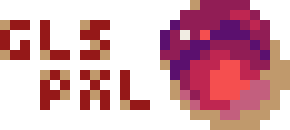
The truth about art is that some concepts are relevant to any art form and some are more specific. Knowing how to compose a piece of art, choose appropriate colors, represent everyday objects accurately; these skills are just as relevant in oil painting as they are in pixel art. However, pixel art does have its own little secrets that aren't found anywhere else.
Anti-Aliasing is a trick for blending one color into another, typically to smooth a rough edge. Pixels are hard, angular shapes and sometimes aren't suitable for organic objects. In this case, pixel artists typically use an intermediate color sparingly along an edge like so:

This trick, like anti-aliasing, is used to smooth sharp, unnatural edges and is best explained visually.

Notice how the line in the left image seems jagged and broken? This problem can be fixed either by altering the line, or, if that is not possible, adding anti-aliasing (AA) to the edges to smooth out the jagged edges.
Dithering is a trick that has existed for a long time because it can be used to make 2 colors seem like 3 or more. This was especially useful when colors were restricted by technological limitations, but is still used to recreate the older style of pixel art and to replicate certain textures on a small scale (think chain mail or coarse sand). Dithering is often used sparingly, since it introduces visual interference and can add unwanted texture.
